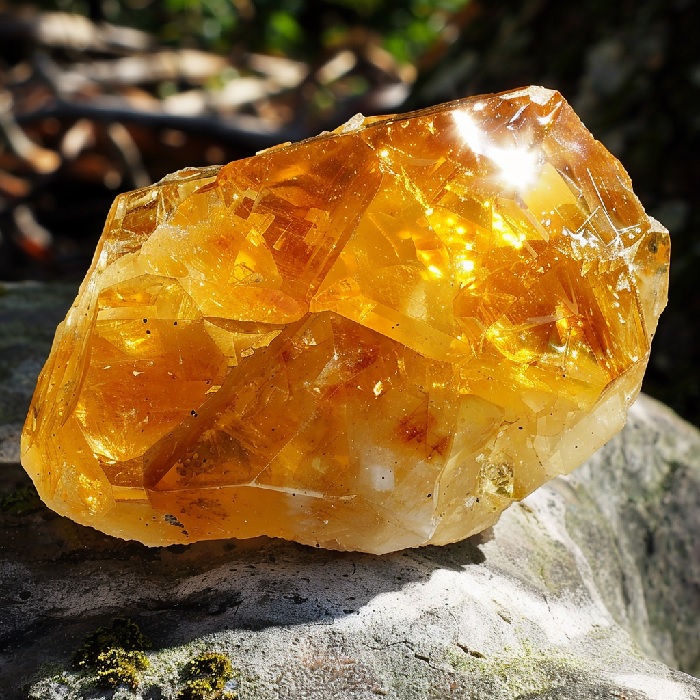Citrine Mining
CITRINE:
Citrine is one of the most popular gemstones in the group of reasonably priced gems, even for the poor. It is available in lemon yellow, deep yellow, light yellow, brownish yellow, and whisky colors. The pastor and psychoanalyst say that if we wear an appropriate gem at the correct time and in the correct way, the gem will undoubtedly help us in our daily activities and alleviate difficulties.
WHERE DO THEY FORM?
Citrine is a variety of quartz found in igneous, metamorphic, and sedimentary rocks. It forms during volcanic eruptions in siliceous volcanic lava that penetrates deep into cavities and veins of rocks. This yellow to orange-colored gemstone comes into existence during the oxidation phase when temperatures are also high.
MINING PROCESS:
Exploring and extracting citrine involves several geological techniques and processes. Here are the key steps:
Prospecting:
Initially, geological maps are studied and field surveys conducted to pinpoint areas likely to contain citrine based on geological conditions.
Mining:
Once a citrine deposit is identified, extraction begins using a mix of open-pit and underground mining methods suited to the specific geological setting.
Sorting:
Extracted citrine undergoes manual sorting and grading based on criteria such as color, clarity, and size to categorize gems by quality.
Cutting and Polishing:
Sorted citrine is then expertly cut and polished using specialized equipment and techniques to enhance its natural beauty and brilliance.
Gemological Analysis:
To fully assess citrine's properties, it undergoes detailed gemological analysis using methods like spectroscopy, X-ray diffraction, and refractometry. This helps identify any impurities or features affecting its quality and value.
Overall, the exploration and extraction of citrine require a strategic blend of these geological methods to produce high-quality gemstones prized for their rarity and aesthetic appeal.
COMPOSITION:
- Chemical Composition: It is silicon dioxide and the chemical formula is SiO2.
- Crystal System: Trigonal crystal system.
- Fractures: Conchoidal.
- Cleavage: Indiscernible.
- Birefringence: 0.009
- Enhancement: Often enhanced to improve the color.
- Luster: Vitreous.
- Refractive Index: 1.544-1.553
- Specific Gravity: 2.6 - 2.7.
- Colors: Various shades of yellow and orange.
- Solid State: Transparent to translucent.
- Hardness: 7 Mohs.
- Tenacity: Brittle.
- Source: Brazil, USA, Russia, Uruguay, Scotland, Bolivia, France, Spain and Madagascar.
- Precautions: Has to be protected from sunlight.
PHYSICAL PROPERTIES:
Clarity:
This dazzling gemstone is clear to transparent in nature and possesses a vitreous luster. Inclusions and defects are relatively rare. A few stones may have minor cracks, but most are clear. Moreover, any inclusions present are usually removed during the cutting process of the rough stone.
Cut:
It can be easily fashioned into various cuts and shapes due to its strong and durable nature. Cutters enjoy working with this stone as it requires minimal effort in terms of time and skill. Some common cuts include pear, oval, round, square, emerald, and many more. However, round and oval shapes are favored the most due to their exceptional brilliance.
Carat Weight:
This gemstone is often found in large pieces or irregular shapes. Stones with a higher carat weight appear stunning, as their color becomes deeper and more vibrant. The ideal weight for jewelry pieces ranges between 2 to 5 carats.
Color:
This unique gemstone occurs in various shades of yellow and orange. Typically, the natural stone exhibits a pale color, though darker shades are often preferred over lighter ones. Its color is attributed to iron impurities present in its composition. Changes in the amount of iron can alter the stone's color, sometimes resulting in stones with traces of brown.
NATURAL OCCURRENCE:
Brazil, France, Madagascar, Bolivia, Uruguay, Scotland, Spain, Russia, North Carolina, Colorado, Georgia, Nevada, and California.
AVAILABLE COLORS:
yellow and orange.















